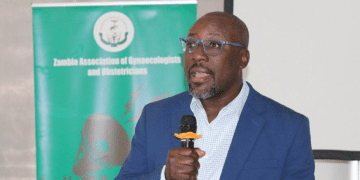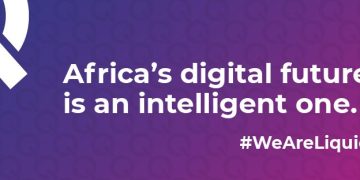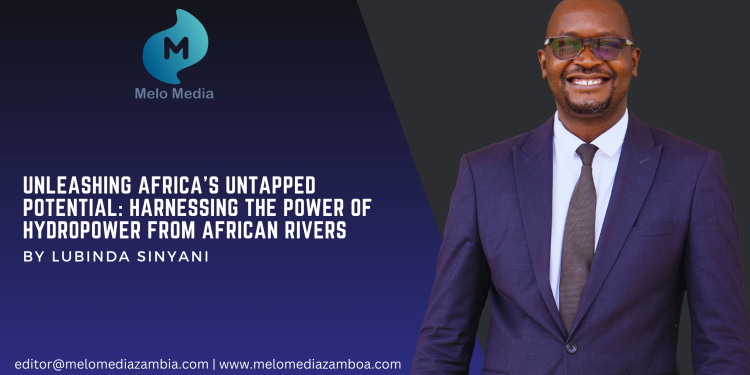By Lubinda Sinyani / Melo Media | Sunday, March 31, 2024 | Lusaka
Unleashing Africa’s Untapped Potential: Harnessing the Power of Hydropower from African Rivers
Africa, with its vast network of rivers and abundant water resources, holds immense potential for energy production. However, much of this potential remains untapped. In this article, we will explore the untapped opportunities of hydropower in Africa and the significant benefits it can bring to the continent.
Hydropower, derived from the energy of flowing water, has long been recognized as a clean, renewable, and reliable source of electricity. With Africa’s numerous perennial rivers such as the Congo, Nile, Zambezi, and Niger, there is an immense opportunity to harness this energy source and propel the continent towards sustainable development.
Harnessing the power of African rivers for hydropower offers numerous advantages. It can provide a stable and consistent electricity supply, reducing the dependence on fossil fuels and promoting sustainable development. Additionally, it can create employment opportunities, drive economic growth, and improve access to electricity in remote areas.
Join us as we uncover the untapped potential of Africa’s rivers and delve into the possibilities of harnessing hydropower. Together, we can empower the continent and pave the way for a brighter and more sustainable future.
Africa is blessed with a myriad of rivers, including the Congo, Nile, Zambezi, and Niger, which present a vast potential for hydropower generation. These rivers have a consistent flow throughout the year, making them ideal for harnessing the power of flowing water. According to estimates, Africa has the potential to generate over 1,000 terawatt-hours (TWh) of electricity annually from hydropower, which is more than ten times the current electricity consumption of the continent. This untapped potential can contribute significantly to meeting the growing energy demand in Africa.
Harnessing hydropower from African rivers can provide a stable and consistent electricity supply. Unlike other renewable energy sources like solar and wind, which are intermittent, hydropower offers a reliable base load power supply. This stability is crucial for the development of industries, businesses, and communities, providing a foundation for economic growth and social development. Additionally, hydropower can play a pivotal role in reducing the continent’s reliance on fossil fuels, mitigating the adverse effects of climate change, and achieving sustainable development goals.
The benefits of harnessing hydropower from African rivers are manifold. Firstly, hydropower is a clean and renewable energy source, generating electricity without emitting harmful greenhouse gases or pollutants. This not only reduces the carbon footprint but also improves air quality, benefiting both human health and the environment. Secondly, hydropower provides a stable and reliable energy supply, reducing the vulnerability to fuel price fluctuations and supply disruptions. This stability is vital for attracting investments, driving economic growth, and creating employment opportunities.
Moreover, hydropower projects have the potential to transform remote and underserved areas by providing access to electricity. According to the International Energy Agency, more than half of the African population lacks access to electricity. Harnessing hydropower from African rivers can bridge this energy gap and improve the quality of life for millions of people. It can enable the electrification of rural communities, powering schools, hospitals, and small-scale industries, while also facilitating the use of modern technology and communication.
While the potential for hydropower in Africa is vast, there are several challenges that need to be addressed for its successful harnessing. One of the primary challenges is the high upfront costs associated with hydropower projects. The construction of large dams and hydroelectric power plants requires significant investments in infrastructure and equipment. Securing financing for such projects can be a daunting task, especially for developing countries with limited financial resources.
Environmental considerations also pose challenges to hydropower development in Africa. Large-scale dam projects can have significant ecological impacts, including altering river ecosystems, displacing communities, and affecting wildlife habitats. It is crucial to strike a balance between harnessing hydropower and preserving the biodiversity and natural resources of the continent. Implementing robust environmental impact assessments, adopting sustainable engineering practices, and engaging with local communities are essential for mitigating these challenges.
Despite the challenges, several successful hydropower projects in Africa serve as inspiring examples of the potential and benefits of harnessing this renewable energy source. One such project is the Inga Dam in the Democratic Republic of Congo. The Inga Dam complex on the Congo River has the potential to generate a staggering 40,000 megawatts (MW) of electricity, making it the largest hydropower project in the world. The project aims to provide electricity to the entire continent, connecting countries through a vast transmission network.
Another notable example is the Grand Ethiopian Renaissance Dam on the Blue Nile River in Ethiopia. Once completed, it will have a capacity of over 6,000 MW, making it the largest hydropower dam in Africa. The dam is expected to significantly boost Ethiopia’s electricity supply, support industrialization efforts, and enable the export of surplus power to neighboring countries. These success stories demonstrate the transformative power of hydropower in driving economic development and regional integration.
Recognizing the potential of hydropower, governments across Africa are implementing initiatives and policies to promote its development. Many countries have established renewable energy targets and incentives to attract investment in the sector. For instance, South Africa has implemented a Renewable Energy Independent Power Producer Procurement Program, which has successfully attracted private investment in hydropower projects. Similarly, countries like Ethiopia, Zambia, and Mozambique have implemented policies to encourage private sector participation in hydropower development.
Furthermore, regional cooperation and integration are crucial for unlocking the full potential of hydropower in Africa. The Southern African Power Pool and the West African Power Pool are examples of regional initiatives that aim to enhance cross-border electricity trade and facilitate the development of large-scale hydropower projects. These initiatives promote cooperation between countries, sharing technical expertise, and pooling resources to overcome the challenges associated with hydropower development.
As mentioned earlier, environmental considerations play a critical role in hydropower development. It is essential to minimize the environmental impact of dam projects and ensure the sustainable utilization of river resources. Several measures can be taken to mitigate the ecological effects of hydropower projects, such as implementing fish passage systems, preserving riparian vegetation, and adopting water management strategies that mimic natural flow patterns. Additionally, engaging with local communities and indigenous peoples in the decision-making process can help incorporate their traditional knowledge and ensure the preservation of cultural heritage.
Hydropower technology has come a long way in recent years, making it more efficient and cost-effective than ever before. The advancements in turbine design, construction techniques, and transmission infrastructure have greatly improved the overall efficiency of hydropower plants.
One of the key technological advancements in hydropower generation is the development of advanced turbines. These turbines are designed to maximize the conversion of water energy into electricity, resulting in higher efficiency and increased power output. In addition, the use of environmentally friendly materials and coatings helps reduce the impact on aquatic ecosystems and ensures sustainability.
Another significant advancement is the integration of smart grid technology into hydropower systems. Smart grids enable better management and distribution of electricity, allowing for improved reliability, reduced transmission losses, and increased grid stability. This is particularly important for Africa, where the existing electricity infrastructure is often outdated and unreliable.
Furthermore, the advent of remote sensing technologies has revolutionized the way hydropower potential is assessed. Satellite imagery and Geographic Information Systems (GIS) allow for accurate mapping of river basins and identification of suitable locations for hydropower installations. This data-driven approach helps optimize the utilization of resources and minimize environmental impacts. With these technological advancements, Africa can harness the power of its rivers on a larger scale, tapping into the continent’s immense hydropower potential. By investing in modern and efficient hydropower infrastructure, Africa can take a significant step towards energy security, economic growth, and sustainable development.








































